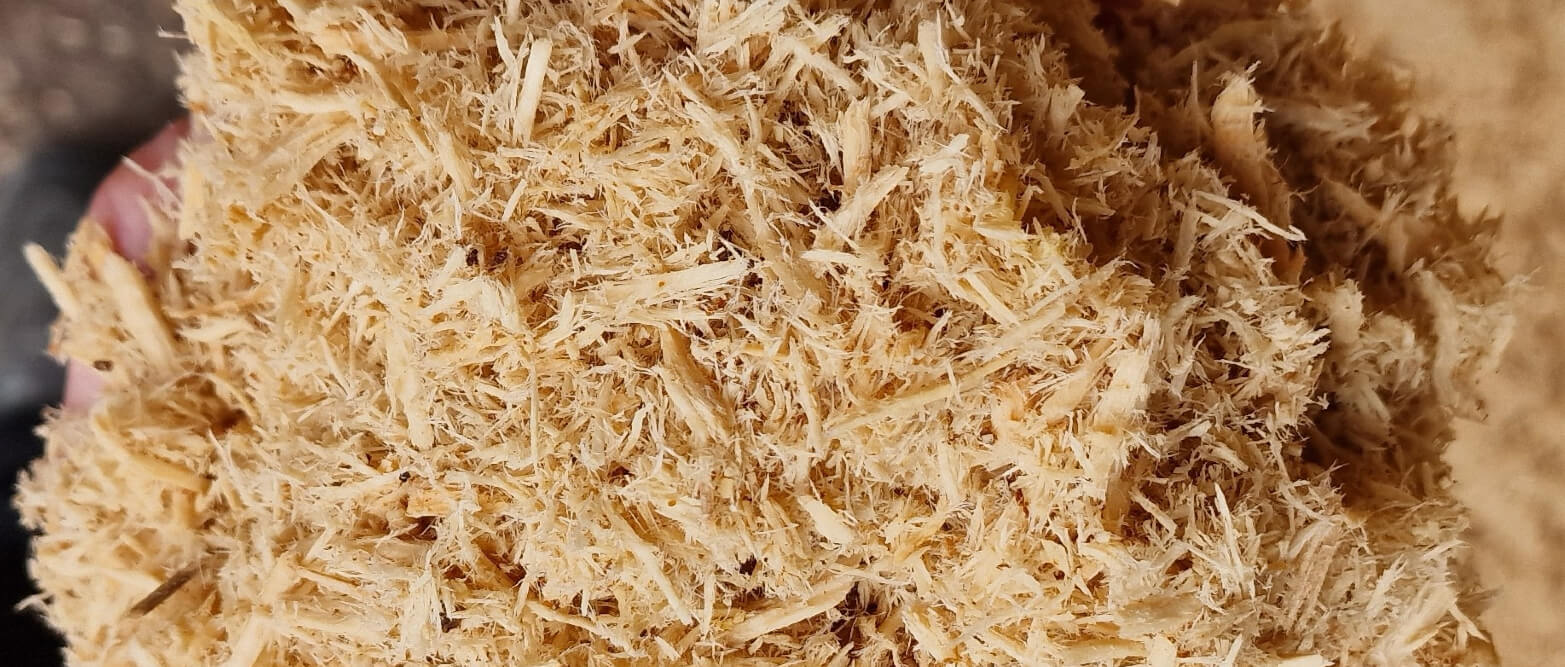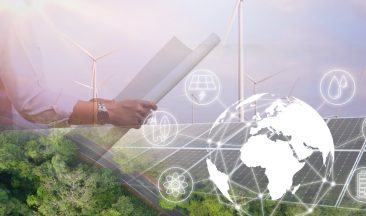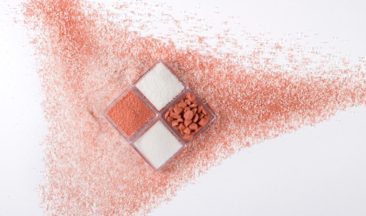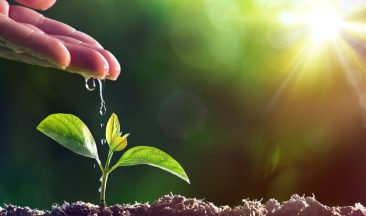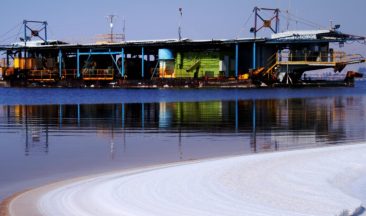In horticultural crops, soil alternatives are used in potting mixes. These alternatives are specifically used because they have optimum drainage quality, contain the right amount of nutrition for growing plants, and possess better qualities than peat, such as large pore space to allow for sufficient oxygen to be held in the planting medium.
These planting substrates are different from typical garden soils, which are meant for in-ground use. Garden soils, if used for potting, would likely become waterlogged, compacted, and wouldn’t contain enough air space for plant roots.
Potting mixes are in growing need as the trend towards urban agriculture and greenhouse systems grows. These systems are growing in popularity to provide local food in population-dense areas. This is driven by the initiative to feed the growing population.
Urban agriculture is expanding as technology allows growers to produce food on rooftops, in abandoned warehouses, and vertically-grown crops in small greenspaces throughout the city. These systems support the growing farm-to-fork movement, by providing freshly harvested produce in the middle of large populous areas.
Greenhouses are growing in favor of areas that cannot otherwise produce fresh food crops due to their short growing season. In the far northern and far southern hemispheres where day length changes dramatically along with seasonal weather patterns, greenhouses offer a solution for sourcing locally grown produce.
What are in these special potting mixes that make them so unique? Many of them contain a special mixture of different ingredients to obtain a certain quality depending on the planting situation. Some of these ingredients include compost, bark, coir, vermiculite, perlite, sand, fertilizer, moisture-retaining treatments, and peat.
Of these potting ingredients, peat has become a growing concern for sustainability purposes.
Let us explore Fibagro Advance, a sustainable wood fiber growing media that is not only meeting the challenges of modern agriculture but also setting a new benchmark for environmental responsibility. From its unique composition to its remarkable performance, Fibagro Advance exemplifies ICL’s dedication to pioneering eco-friendly solutions in the agricultural sector.
What is Peat?
Peat is the uppermost layer of organic material in the soil, primarily composed of partially decomposed organic matter from plant materials. It forms under water-logged, oxygen-depleted systems that are highly acidic and nutrient-scarce.
While offering many benefits as part of a mix in plant growing media, such as improving drainage while also retaining adequate amounts of water for growing plants, when mined peat releases large amounts of CO2 into the atmosphere. Why is this? Because peat itself stores CO2 in the ground and will continue to store it until disturbed. This only contributes more to our warming climate.
Peatlands, or bogs, are where peat is mined from. These lands act as a habitat for many different wetland species. Beyond that, they have a geological purpose; capturing excess moisture to reduce flooding and filtering water, producing safe, clean groundwater.
As of today, only 22% of U.K. peatlands are in near natural or rewetted conditions. Mining of these lands leads to significant site destruction of archeological lands. In the U.K. alone it is estimated that more than 20,500 archeological sites exist within these areas.
These lands act as record keepers. When studied, these peatlands can tell us about the history of our environment and how it is changing.
As we learn more about the negative effects of disturbing these peatlands, we are left with the task of finding peat alternatives in potting mixtures. This has been an ongoing goal for over two decades.
As it becomes an apparent need to move away from our dependency on peat moss, the search for viable options has continued. Many peat alternative products do not have the same characteristics as peat. Finding a sustainable solution poses its difficulty.
With products such as coconut coir, perlite, vermiculite, and wood fiber growing as peat alternative products, it is important to consider the environmental impacts of these alternatives.
What is Fibagro Advance?
ICL Group is committed to sustainably sourced materials for all their products. Fibagro Advance is a peat-free material suitable for peat-free or peat-reduced growing media. This line is sustainably manufactured and sourced in the UK and thermo-mechanically processed to achieve optimum consistency.
How are wood fiber substrates used in agriculture? They are used to improve the physical properties of plant-growing media. Wood fiber products can increase water retention and aeration. This ensures plants have the optimum balance of water and air in their root zone.
Trialed specifically for quality and performance, this medium-low to medium-dense product is available, with full access to ICL’s line of nutrition and wetting agent packages. Because this product can be mixed to create a high-quality performance blend, it can meet the various needs of different operations.
Fibagro Advance: Results
Certain characteristics of the Fibagro Advance line make it unique and stand out among the rest. This line contains the optimum balance between air-filled porosity (AFP) and water-holding capacity (WHC) while offering the benefits of a high cation exchange capacity (CEC). With the combined benefits of these factors, the ideal environment for plant growth is created.
Air Filled Porosity (AFP) and Water Holding Capacity (WHC)
Air filled porosity (AFP) refers to the proportion of air spaces within the growing media. It plays a crucial role in plant growth by ensuring that plant roots receive an adequate oxygen supply, facilitating the release of waste gasses like carbon dioxide and ethylene.
Maintaining the right balance of AFP is essential for roots to remain properly aerated without subjecting the plant to drought stress. Low AFP can lead to insufficient aeration, resulting in root damage and even potential loss of the plant. Conversely, high AFP indicates that the air spaces are too large, causing the medium to drain rapidly, necessitating frequent irrigation to prevent drought stress.
Water-holding capacity, a vital aspect of substrate composition, refers to the portion of a substrate’s pore space that retains water after gravity drainage, and it plays a crucial role in facilitating plant growth.
Cation Exchange Capacity
Cation Exchange Capacity (CEC) serves as a crucial indicator of a growing medium’s ability to retain essential plant nutrients. Imagine the particles within the growing medium as negative magnets (anions) that attract cations like Potassium (K+), Calcium (Ca2+), and Magnesium (Mg2+).
CEC’s role is pivotal in regulating the supply of these nutrients as well as nitrogen. Additionally, it influences pH regulation. Growing media with a high CEC exhibit faster recovery from acidification compared to those with a low CEC.
In cases of low CEC, the medium struggles to retain cations, resulting in nutrient leaching and potential deficiencies, especially in Potassium (K+) and Magnesium (Mg2+). Conversely, high CEC media effectively maintain cation concentrations, making these nutrients readily available to plant roots when needed.
Fibagro Advance, as an innovative horticultural material, offers an ideal balance between water-holding capacity (WHC) and air-filled porosity (AFP). As a high CEC substrate, it presents a compelling alternative to peat, providing its performance to be as good, if not better than, traditional peat-based media.
Supported by the promising results from ICL’s trials, it demonstrated excellent plant growth and vibrant colors and outperformed both peat-based media and other wood fiber products. Fibagro Advance is an excellent material that provides robust peat-reduced and peat-free mixes for optimum growth in professional horticulture.
Fibagro Unique Characteristics
Overcoming typical challenges associated with wood fiber in growing media, such as water retention, nitrogen drawdown, and buffering capacity, has been a significant development of Fibagro Advance.
ICL’s unique thermo-mechanical processing produces a consistent product that customers can rely on. The split-end fibers created in this process produce a unique matrix when blended with raw materials such as peat, coir, and bark.
With low to medium bulk density, slumping in plants is reduced. Combined with the ideal balance of AFP and WHC and this low to medium bulk density, Fibagro Advance products facilitate good rooting, drainage, and ease of irrigation management. Combining this technology with other ICL fertilizers, such as Osmocote 5 controlled-release fertilizer, will help maximize plant quality and production.
More on the subject:
Top 10 Agriculture Trends to Watch in 2024
Fibagro Advance – A Soilless Plant Growing Media
Promoting Sustainability in Horticulture with Wood Fiber substrate
Fibagro Advance in Practice
Horticultural crops serve a unique purpose in our food production system. As urban agriculture and greenhouse crops grow in popularity, so does the need for innovation in potting and wood fiber substrates. As peat becomes a less viable option for potting mixes due to sustainability issues, advancements in technology, like that of Fibagro, is imperative as we continue to strive to meet the demands of our growing population.
The Fibagro Advance line is a unique wood fiber substrate that is a great option for bedding mixes, trays, and small pots. This peat alternative outperforms the competition with an optimum balance between air-filled porosity (AFP) and water-holding capacity (WHC). As a high CEC substrate, this product consistently achieves optimum plant growth and quality.
ICL currently offers two grades of Fibagro Advance materials that are commercially available: the courser grade, which is ideally suited for larger pots, and the finer grade, more suitable for small pot plants, and the bedding plant industry which utilizes smaller volume pack cells.
Conclusion
Fibagro Advance emerges as a pivotal ally in the field of sustainable horticulture, marking a significant stride forward for ICL agriculture products. This innovative solution directly addresses the pressing environmental concerns associated with the use of peat, showcasing our commitment to the evolving dynamics of agricultural sustainability.
With its unique blend of optimum water retention, enhanced aeration, and superior nutrient management capabilities, Fibagro Advance not only meets but exceeds the demands of modern urban and commercial horticulture in a more sustainable way. With continuing advancement, ICL will continue to be a leader in bringing high-quality, sustainable options to market.
